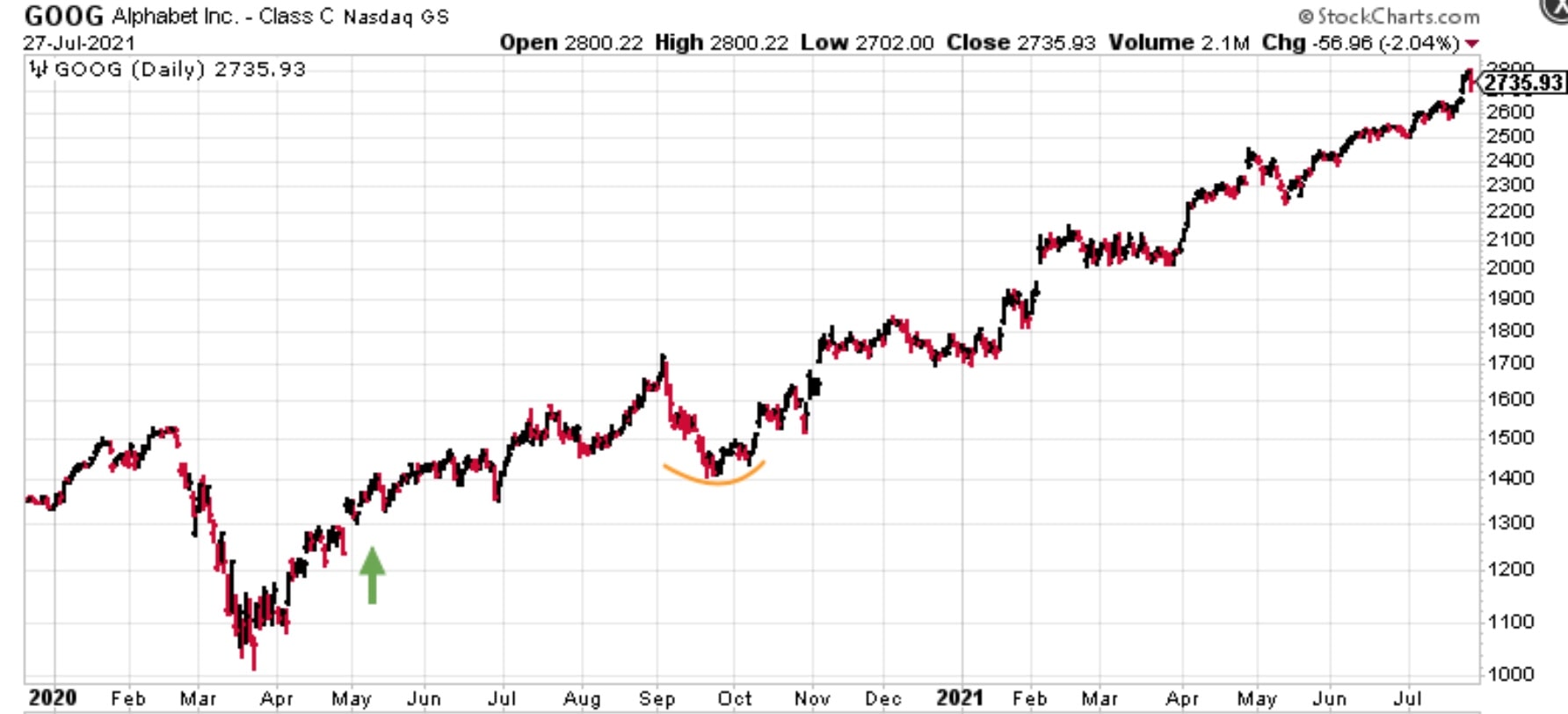People enjoy taking profits so much. It just feels so good to lock in that gain. You feel like a genius and you can tell everyone that you made money in the stock market. This can be a bad, bad behavior. Realizing winners too early is one of the main reasons traders don’t become profitable overall.
What I’ve come to understand more and more in time is that a trader needs to be bold with profits. You don’t want to risk too much of your core capital but you need to tolerate risk with your open profits so they can become larger. Taking small profits is a loser’s game because they won’t cover your losses when things aren’t working out. It’s part of the bigger picture game that you don’t focus too much on the short-term results.
I don’t rush to realize gains, I don’t trade the PnL figures nor take some off because I have a nice open profit. I let my profits run until either the stop or the target gets hit. Short-term swing trading will frequently kick me out of a long-term trend, long-term trend trading will give back some profits when there’s confirmation of it possibly reversing. That’s how it is and my job as a trader is to find balance between the two, and put odds in my favor using some trading rules.
Here’s an example of a long-term trend trade I’ve been holding for what’s even a long period for me. I went long GOOG in May last year (green arrow) when it became a “risk on” environment according to my trading rules. I was really bold with my profits in September (orange parabola) when price was very near to my STP loss and almost getting out breakeven after the position had been up +25% just few weeks earlier. Since then GOOG has been making higher highs and higher lows which is the characteristics of an uptrend. Today the position is up roughly +100%.

I’m not trying to look a genius here. I didn’t know GOOG was going to work out like that and I’ve been taking small losses along the way in other names. Due to the fact that losses are small and cut short quickly, I don’t have any exciting charts of those. Now GOOG can reverse and fall anytime and at some point it will. Meanwhile I’m sticking to the main trend which is up until proven otherwise.
On the other hand, be afraid of your losses. I quickly cut a loser short when the trade is not working. Holding on to losers is even worse than taking small profits, but if you do both it’s a matter of time until you’re kicked out of the game.
Lesson Learned: Be bold with your profits.
Share this post
2 replies on “Be bold with your profits”
See on väga hea postitus ja kirjuta kindlasti selliseid veel! Mul on paar küsimust ka.
Kas sa müüd teel üles aktsiaid osade kaupa maha ka?
Näiteks kui GOOG oleks tulnud oktoobris tagasi su break-eveni juurde, siis oleksid maha müünud ja kõrgemalt uut sisenemiskohta otsinud aga kui maist oktoobrini paar väikest kasumit oleksid võtnud, siis suureneb tõenäosus, et väljud trade’st võitjana (võidu absoluutsuurus oleks vb aga olnud väiksem, sest tugevusse müües saavad ühel hetkel aktsiad peost otsa).
Kas oled aja jooksul GOOG stop-lossi ka tõstnud järgmiste kõrgemate põhjade alla, st täna sa enam ei laseks sellel break-eveni tasemeni langeda? Pole kindel kuidas see trendi- ja positsioonikauplemine käib 😛
Thanks for your comment, Pinsi Põlv! I hope it’s OK if I reply in English so all readers can understand 🙂
Classic trend-following is staying in the position as long as the uptrend is valid according to the chosen indicators without trying to pick a top and sell parts into strength. This is what I’m doing with GOOG here. If I’m out with a stop and get a new buy signal at a higher price, then I buy it back higher. If price starts going in my favor then I raise the stop and protect part of my gains. Taking partial profits in a trend is cutting your winner short. Just like you say, it creates a peace of mind of being right, but comes at a cost of getting out while the trend may continue, lowering the total return. Taking partial profits can be OK if you want to smooth out the equity curve, but I know from my backtest that doing the hard thing and letting winners run is better over a large sample size.
However, it’s different for swing strategies where I sell into strength at technically overbought levels. No strategy is perfect but they complement each other in changing market environments. Swing trading is easier to begin with as it has higher win rate for the cost of smaller winners compared to trend trading which takes more small losses and tries to capture outlier moves.